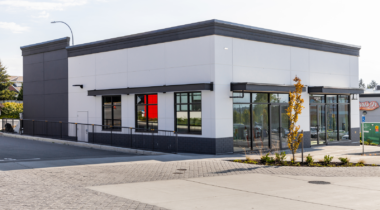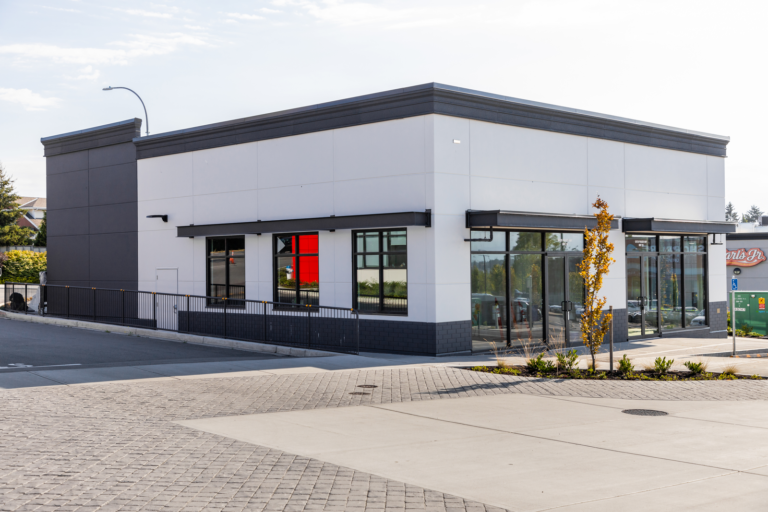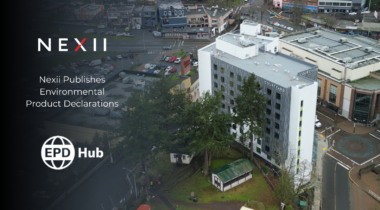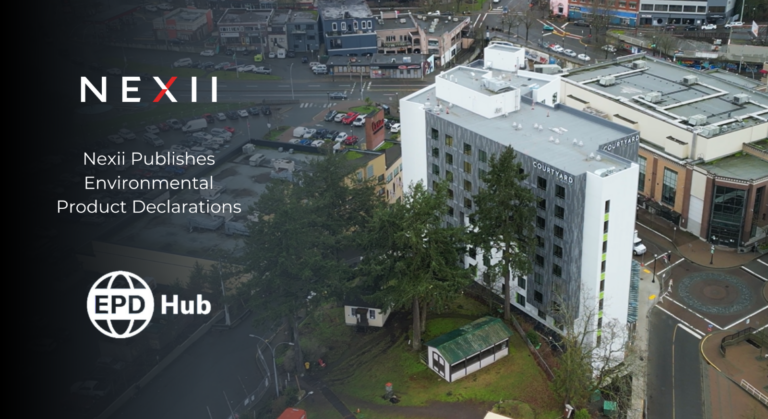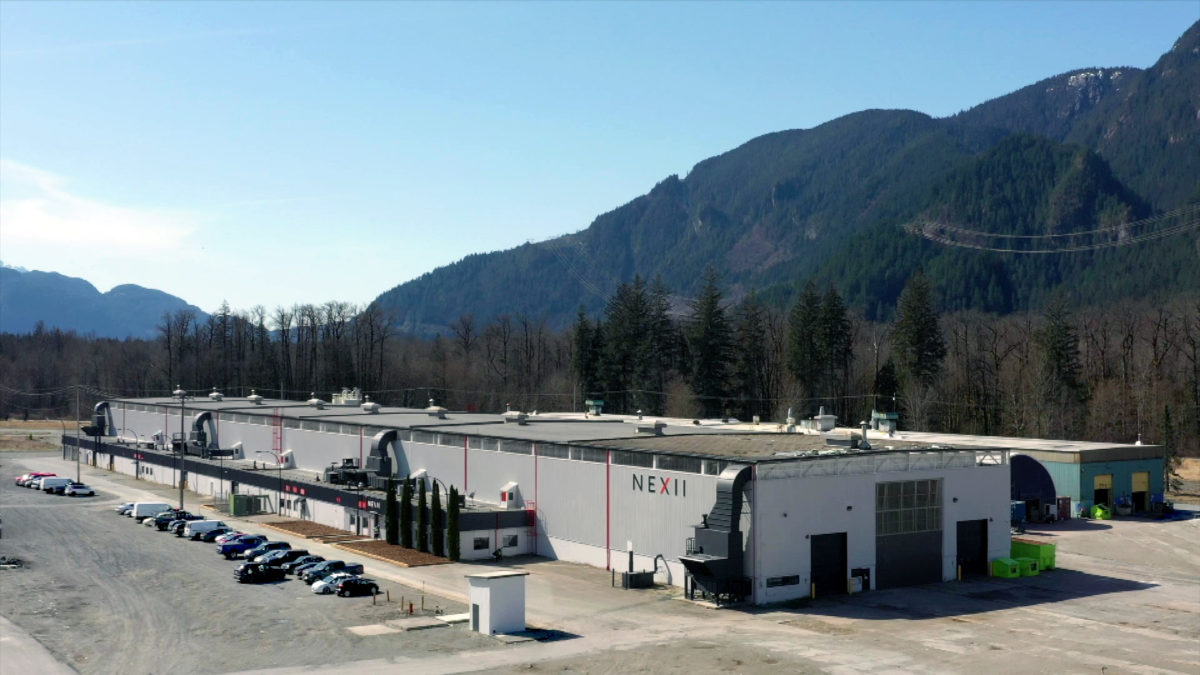
A new program has been implemented at Nexii’s Squamish facility, driving deeper recycling and reuse while diverting waste from landfill. The goal is to achieve zero waste certification.
The building and construction industry generates a lot of waste, filling landfills, negatively impacting the ecosystem and air quality, and contributing to climate change through the emissions of greenhouse gases. As much as 30% of all building materials delivered to a typical construction site can end up as waste![1]
Committed to Circularity
To address the negative impacts of construction waste, Nexii incorporates circularity in our product design as well as manufacturing and construction processes. Our Design for Reuse approach to buildings and building products, precision off-site manufacturing and near zero-waste assembly process embody circular principles.
We also integrate circularity in Nexii manufacturing facilities, designed from the outset with Lean principles that reduce waste at every stage of operation. Our goal is to achieve zero waste certified manufacturing within two years of opening each plant. For our plant in Squamish, British Columbia, the goal is zero waste by 2023. To achieve this target will require diverting 90% of waste from the landfill, minimizing contamination (<10%), educating and training our Nexii team members, and building partnerships for hard to divert material streams.
We spoke with Joanna Siemens, Production Team lead at Nexii’s Squamish Operations to learn more about Nexii’s waste diversion program.
Tell us about Nexii’s waste diversion program
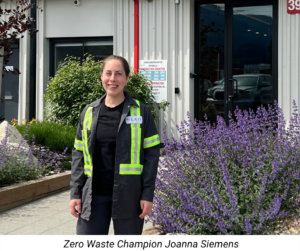
Waste management has always been a part of the Nexii ethos. Our Zero Waste working group was established in Oct 2021 to develop a roadmap and actions towards zero waste operations and certification. The TRUE (Total Resource Use and Efficiency) zero waste certification administered by the Green Business Certification Inc (GBCI) acts as a guiding force for the working group and waste diversion program. TRUE certification enables facilities to define, pursue and achieve their zero waste goals, reducing their carbon footprint and supporting public health.
Our Zero Waste working group comprises Sustainability, Engineering, Operations and Safety team members each providing valuable input and resource. The working group focuses its efforts on navigating the certification pathway, which includes conducting waste audits, right-sizing bins, creating clear signage that relates to the unique waste streams at Nexii, working with vendors to create a closed-loop supply chain, developing content for weekly waste talks, and incorporating waste reduction into daily operations.
The team is also responsible for managing TRUE reporting requirements, including submitting 12 months of waste data to the GBCI annually and committing to not exceeding a 10% contamination level for any material leaving the site.
How did you identify the waste materials to be diverted?
It would be incredible to divert ALL materials from landfills. For that to happen, however, there needs to
 be an appetite for the materials either in-house or in the broader market. Recycling only works when someone is interested in purchasing or repurposing the material.
be an appetite for the materials either in-house or in the broader market. Recycling only works when someone is interested in purchasing or repurposing the material.
We have implemented many systems at Nexii and have a diverse range of team members who bring valuable knowledge. We collaborate with our team, consult with experts in the field, and constantly look for ways to divert materials from landfill and incineration. By partnering with waste haulers, material reclamation facilities, and mission-aligned suppliers, so far, we have identified diversion opportunities for at least 15 out of ~20 key waste streams at our Squamish facility.
Where do you send waste materials that are diverted?
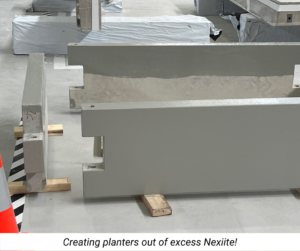 It depends on the material. GFL, a local hauling company, picks up a lot of recyclable waste and brings it to appropriate facilities. We have also found an excellent waste reduction solution for the excess Nexiite —making stackable lock blocks and planters! This solution keeps our waste and hauling fees down, not to mention creating beautiful containers for flowers and plants. We also have begun densifying EPS scraps in– house to minimize space requirements and GHG impacts from transporting EPS for next–life processing, for which there is a healthy reuse market.
It depends on the material. GFL, a local hauling company, picks up a lot of recyclable waste and brings it to appropriate facilities. We have also found an excellent waste reduction solution for the excess Nexiite —making stackable lock blocks and planters! This solution keeps our waste and hauling fees down, not to mention creating beautiful containers for flowers and plants. We also have begun densifying EPS scraps in– house to minimize space requirements and GHG impacts from transporting EPS for next–life processing, for which there is a healthy reuse market.
How do you engage and get buy in from everyone at the Squamish facility?
We knew to be successful, we needed someone in the facility to champion the program – and that’s me! My role as Zero Waste Champion is to promote the program to my peers and direct reports. The process has not been difficult. Two production team leads, Kyle Nadon and Matt DeGrace took the initiative to implement a simplified co-mingled recycling bin system. They audit the contents of the bins to ensure we avoid contamination and work with team members to find ways to repurpose materials that could easily end up becoming waste. Kyle and Matt recently presented their ideas at a company-wide Town Hall meeting to share how simple and effective it is to divert waste at the source! Efforts like these exemplify the care our team has for the environment!
What are the next steps for waste diversion at Nexii?
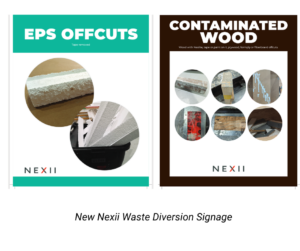
Our immediate next step is to replace temporary waste diversion bin labels with new Zero Waste signage, tailored to Nexii’s material streams, and created specifically to encourage proper waste sorting and minimize contamination.
We plan to continue working with vendors to create a closed-loop supply chain and emphasizing purchasing from vendors with their own zero waste goals. We will educate staff on the importance of zero waste efforts and how their contributions make a difference, continue innovating ways to reduce waste first and find more sustainable end uses for any remaining waste.

